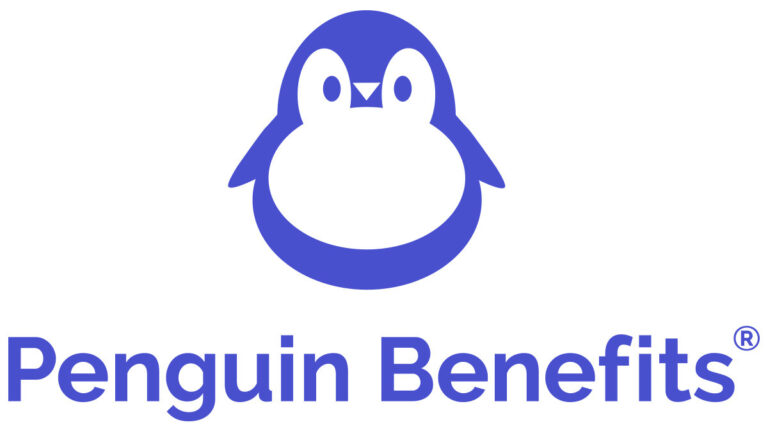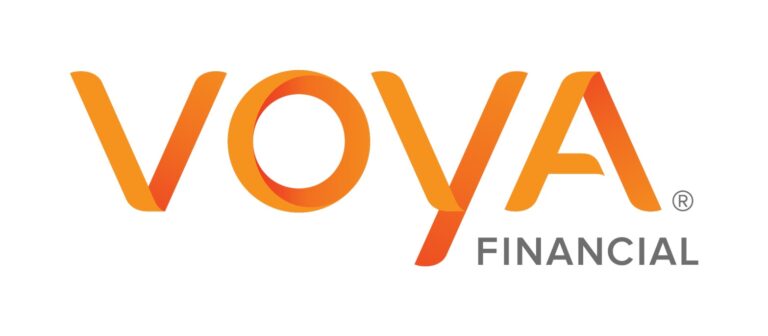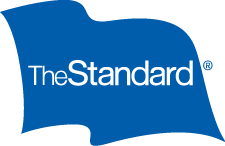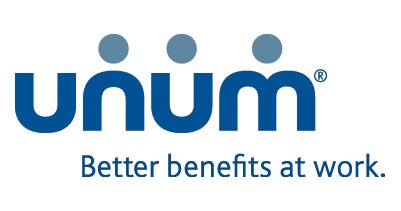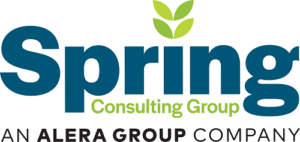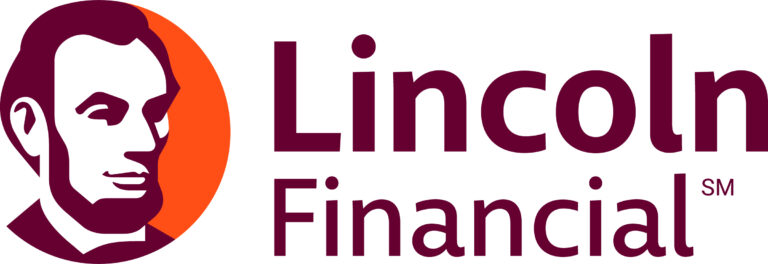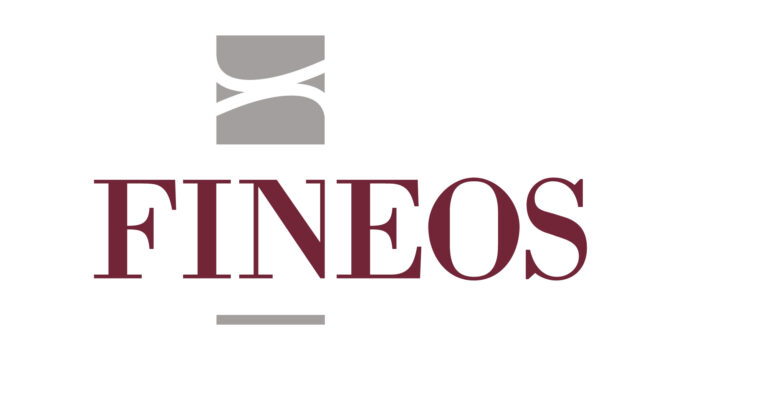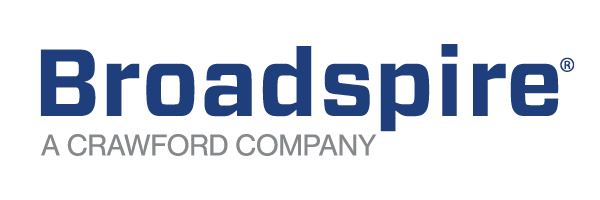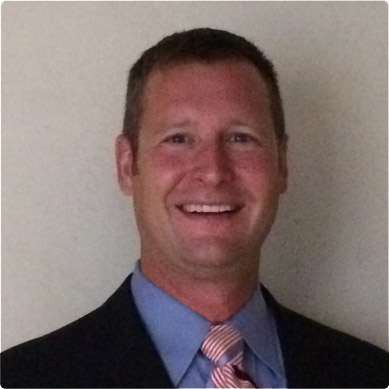With mental health on track to become the No. 1 driver of short-term disability claims, employers seek new ways to support several generations of employees in the workplace. Listen in to this episode for guidance and perspectives from David Setzkorn, MBA, CPCU, senior vice president of workforce absence and disability practice leader for Sedgwick, and Mark Debus, LCSW, clinical manager of behavioral health services for Sedgwick.
Resources:
- The Evolution of Mental Health and Shifting Demographics
- DMEC Mental Health Resources & Tools
- The Evolution of Mental Health Parity: Webinar recording
- Employers Are Investing in Employee Mental Health: A DMEC Podcast Playlist
Transcript
DMEC: Welcome to absence management perspectives, a DMEC podcast. The Disability Management Employer Coalition, or DMEC as we're known by most people, provides focused education, knowledge and networking opportunities for absence and disability management professionals. DMEC has become a leading voice in the industry and represents more than 20,000 professionals from organizations of all sizes across the United States and Canada. This podcast series focuses on industry perspectives and delves into issues that affect DMEC members and the community as a whole. We're thrilled to have you with us and hope you'll visit us@dmec.org to get a full picture of what we have to offer, from webinars and publications to conferences, certifications, and much more. Let's get started and meet the people behind the processes.
. So the column notes that in:ta really started to shift in:ely. And while that shortage,:David Setzkorn: Yeah. And, you know, it's interesting, you know, when you're dealing with older generations, of which I fall into, how you approach your healthcare is considerably different than how younger generations look at that. So, you know, as a father who has several children in those younger generations, for them it is quite normal to hop on a video chat, do a telehealth, you know, talk to a doctor. Just the stigma and surrounding calling somebody up or getting on a video chat about, hey, I need to talk about my mental health or I need to talk about this, that just isn't there anymore. And it's, it's accepted that, hey, this is just part of my healthcare and this is something I need to go talk to. I need to take care of it just as I would my annual physical. There's a more openness or willingness, and I think that's just a generational thing. I mean, if you take a look at, you know, employees who are in those older generations, there might be some apprehension about that. It's, and that apprehension could come from a couple of different things. They could be embarrassed about it. They may not want people to know about it. They may not want their employer to know about it because they're afraid of how it's going to impact them. And employers mostly to their credit, are, they're not taking that stance on it. But when you take a look at it, you know, especially as we went through the COVID epidemic, there was, you know, and I think this is part of where this stigma comes in. If you take a look at the whole debate we had around vaccines, that drew a lot of stress on employees. You know, are the vaccines mandatory? Am I going to lose my job if I don't take it? Do I have to take it? And I really thought, think that brings it forward because, you know, if you're concerned about losing your job over something like getting vaccinated, what do you think is going to happen if you go to your employer and say, hey, I have a substance abuse issue or, you know what, I'm just, you know, I, I'm depressed or I have severe anxiety. And I think there's a lot of stress with that, especially as, and I think we're starting to see this more and more as, as employers are starting to move more to a hybrid back in the office type model. I think that's, that's, that's spinning up now for younger workers. It's not a big deal. We go on the video, we talk to somebody, we get over it. But those older generations may not be comfortable with that. And quite honestly, it's, you know, they're not at the beginning of their career. Whereas, you know, when you're early in your career, you may be willing to move if you don't get exactly what you want. For those of us who have been around for a while and have been out there, you may not want to be moving careers because it may be harder to do that. So I think that's why I think demographics are playing such a big role into it. And as we noted in the paper, even though while we're seeing a lot more adoption for younger workers, where the impact is really being felt is with those older workers out there. So it's, I think it's just a matter of, you know, when you're young and you're new in the workforce, you just accept it as valid and, you know, you don't have those built in assumptions or presumptions that you may have gained working, you know, 10, 20, 30 years in the industry.
DMEC: Those are great points. I really, I appreciate that context and the differences that you're noting. And frankly, it's an important point about the concern related to the vaccines and that concern of what would happen, that what if you share some information that some people look at as you need to be very quiet about or not share as openly. So thank you for that. What can employers be doing now to address the needs of millennials and generation zones? Two generations that will account for nearly 75% of the workforce in five years. Mark, would you be willing to kick us off here and hand things over to David? If he has anything to add?
Mark Debus: Be happy to. Well, and David had some great examples of the differences in the generations. And when I think of differences of generations, I kind of think of the key thing to remember about millennials and Gen Z. And full disclosure, I'm Gen X. We're the generation that grew up with after school specials on tv that tackled the never before topics like addiction, sexual assault, and eating disorders. It's also one of those things where, for us, it was always this special topic, and for the younger generations, they grew up as this is a normal topic. This is something that you normally talk about, Gen Z especially. I mean, there's really no stigma at all for accessing mental health treatment that the earlier generations face. And so I think one thing that we need to consider is that Gen Z and millennials are going to be 75% of the workforce in about five years. And it's something that we need to understand as employers, as managers, that they're going to come with some expectations that employers are providing some baseline of mental wellness awareness, that they come to expect that that that's important to them. And if they don't get that, they're going to hop to another job. Job hopping is not that big of a deal. There's no stigma about that, especially in, you know, earlier on in your career, and David alluded to this earlier where, you know, people of my generation are older, hopping around from job to job is sort of looked down upon. But, you know, millennials and Gen Z certainly will hop around a lot, even, you know, multiple jobs within one year if it suits their needs. So one thing that managers really need to be focusing on in order to address mental wellness is that they need to be talking about this. They need to be open about this. And this is something I talk a lot with managers, sort of proactively. Hey, you are responsible for preventing mental wellness breakdowns among your work groups. I mean, that's something that you actually own, and it's something that managers need to be open about, talking about and being very transparent about stress in the workplace and what that might look like, and talking openly about ways to overcome some of that stress or things that the manager can do to help alleviate some of that stress. And you actually need to use feeling words when you're having those conversations, because this generation is all about feelings. Gen Z grew up talking about feelings. If you look at the emoji chart, there's hundreds of them that have different types of feelings. My generation had the little feelings chart, and we had about six. The younger generations are used to talking about feelings all the time in very visual ways, but also just conversationally. And so managers need to adopt some of that language when they're talking to their employees. And it's something just to, you know, kind of having the. Having your back pocket and to be aware that this is going to be something that is demanded of you. There's an expectation that you're providing not only conversations about this, that you have an awareness about this, that you're providing the baseline of mental health resources for employees. That could be something like an employee assistance program. It could be health insurance that covers mental health visits. Those are just the very baseline. You need to provide some other things as well.
DMEC: I think those are great examples, Mark, and I really appreciate that you mentioned using feeling words. Can you give us an example of what that would be?
Mark Debus: Sure. Use the word feeling. What I do with my team, and I have a slight advantage because my team are all mental health professionals. I lead a team of master's level clinicians. And so we talk about feelings all day long. And one thing that I do when I have conversations with them, and I check in with them every week, set amount of time every week. So they. They know that that is their time. They can talk about anything. We don't necessarily talk about work. We talk about personal stuff, too. But one thing we talk about is, how are you feeling today? How are you feeling about this decision you made? We talk about cases that we're working on, and we talk about our feelings associated with those cases. The good, the bad, the difficult, the challenging, the positive, all of those things. And I just normalize that for them. And in return, they will talk openly about that with me because I've sort of laid the groundwork that we're going to talk about feelings, and that's okay to talk about in the workplace. I know that's always been a stigma in the past. I mean, we tend to view work as completely separate from feeling, as if we're all automatons or something doing our job. We're dealing with people here, and part of being human is having feelings. And the more that we talk about that, the more that we normalize that, the less that people will feel a barrier in coming to you if they need something. If they're particularly struggling with something, whether it's a personal issue, maybe it's workplace stress. People will come to you more and seek your advice and guidance if they feel comfortable that you can handle those types of conversations. So I actually use the word feeling all the time. I will give examples of what I am feeling. You know, I edit it maybe a little bit because, you know, they don't need to know that I'm, you know, under the gun about particular productivity or something like that. But, you know, if I'm feeling particularly stressed that day, it's like, you know, I may be transparent and say, you know, today is a kind of a crunch day for me, and I'm feeling. I'm feeling a little crispy around the edges. So if I snap at you in some way, it's not intentional, but that's what's going on for me right now. And I just put that out there. And that allows my colleague, who reports to me, to then share with me maybe something that they're also feeling. Maybe they're feeling it a different way, or maybe they can provide me with some support, and, you know, that's a good thing. It helps build teamwork. It helps build accountability. It helps people feel included in, you know, the sharing of the workload. So that's. That's what I mean by feeling. You actually use the word feeling.
DMEC: That's really helpful, I think. And I love your use of the word feeling a little. The words feeling a little crispy around the edges. I might use that.
Mark Debus: I know I learned that's actually a phrase my grandmother used to say. I've always kind of held onto that. But, yeah, people kind of know what you mean, even though it doesn't really have a clinical term, but you know what it means.
DMEC: Absolutely. And I think giving that permission and setting that expectation that managers are responsible both for the physical as well as mental health of their people in the workplace and guiding them through that process is a point that we've heard speakers comment on during DMEC conferences. And I really appreciate you bringing that up here, because I don't think that's altogether common yet in the workplace.
Mark Debus: Not yet. I think it's getting there, and I think the more that we discuss it, the more that we normalize this. I mean, I think it helps, certainly my generation and even boomers, but it's also something that Gen X and millennials are expecting, and I think if we can meet them at their expectations, I think it's going to be a great opportunity to build teamwork and also prevent, you know, breakdowns in mental wellness among your work groups.
DMEC: That's fantastic. And, David, I don't want to leave you out. Did you have anything you wanted to add in there?
David Setzkorn: No, I think Mark absolutely hit the nail on the head there, and I do think it's important. One thing that, you know, when you're looking at all this and market great examples of how he engages his team. But I think it's also, there is a certain apprehension from managers to engage like Mark is talking about, because there's a very fine line with going down and talking about how your employees are feeling, which I think is important to make sure that, hey, you can engage in those level of conversations to crossing over where you're starting to ask them to divulge things that they may or may not want to involve, because that rolls into potential issues under the American with Disabilities act, in which employers can't force an employee to disclose information they don't want to. So the way Mark handled it, and the example he gave, that is a perfect example of how you want to engage somebody, you're not requiring them. And I think when we're dealing with managers, and this is one of the things that was noted in the article, is that how managers engage and how they're trained to engage, that is something that really needs to be addressed. But I would, you know, Mark did a phenomenal job of basically saying, hey, this is something you should consider when you want to try to engage employees on this.
Mark Debus: Yeah. And David, kind of to that point, you're absolutely right. You don't want to force people to talk about personal issues if they don't feel comfortable with. What I found clinically to be really effective is when you use yourself and you do selective self disclosure in these conversations, it invites people to provide information that could be personal, but it's their choice. And so, but if you create an environment where that is welcomed to talk about these things, because we're all human, we all have feelings, we all have personal struggles that impact our work performance, the more you're creating an environment where people feel comfortable coming toward, you know, coming to you with these issues, it's gonna be healthier all around. And, but you, but you're absolutely right. You don't want to directly ask people, tell me, you know, tell me about this, because you could be crossing into a kind of a gray area or even a forbidden area. And so you don't want to create a hostile and work environment. You want to create an environment inviting work environment. So, yeah, that's a very good distinction.
DMEC: I really appreciate the fact that you're covering that question of how you create that environment, and then when you refer to disability and absence management professionals, because I have heard about that hesitation or, frankly, the fear of overstepping. And as David mentioned, and then, Mark, you gave additional context there, which was really helpful. There is that fear that, I think prevents people from creating the environment that they'd like to see. And that leads me into the next question, which is really, what is the biggest stumbling block for employers in terms of not only adjusting their environments, but also adjusting the mental health benefits that are offered so that they appeal to these different generations in the workforce for us. So, David, I'm hoping you'll kick us off here and help provide some context.
gthen what was passed back in:Mark Debus: You know, I think one thing to consider, and kind of more globally, is that mental wellness isn't just about particular benefits. Mental wellness includes salary. Mental wellness includes time off, and most importantly, mental wellness includes flexibility. And you're going to see this a lot with younger generations. They're going to demand more than just benefits. Even if you offer four different levels of benefits, some are through AI or virtual visits or text-based visits or maybe some podcasts or something. You offer all these sort of tech based mental wellness benefits, but you don't address flexibility and schedule or hybrid work environments or time off policies or general flexibility about taking time off in the afternoon to take care of personal business and then coming back to work and working some flex time. If you don't address any of those things, you're still going to get the same levels of engagement with these other benefits. And so I think you got to look at it more holistically, other than just from a benefit standpoint. And I think savvy employers are really looking at this holistically. I mean, I know here at such a, we're kind of approaching it from all sorts of different angles. We've got all sorts of array of benefits available to us as colleagues, but we are also, you know, managers are also a little bit more savvy about flex time for some roles, and they're more savvy about flexibility and scheduling and time off and how you incorporate that with paid time off or unpaid time off or leaves of absences or all those things. You need to look at it more like a global approach. And there isn't really a secret answer to this. It sometimes depends on the employer and their culture and who your colleagues are that you've hired. For that. You need to kind of understand, you know, who, who is your colleague base and what's important to them. And sometimes you need to tailor it based on, you know, who you're hiring sometimes and kind of be really specific on a, you know, almost on a case-by-case basis, if you can, but also still providing something that's holistic and available to everybody. It's very challenging.
hey, we're going to give you:Mark Debus: Yeah, that's excellent. And I think, you know, you also look at the issue of, you know, when you're looking at turnover and those types of things, you're looking at kind of issues of loyalty and diversity and other things that you want to instill in your, in your work groups. But, you know, when it comes down to it, what are you as an employer doing to promote that holistically? What are you doing to include people from diverse backgrounds, and how are you celebrating that, and how are you including that? How that includes new parents? What are you doing to encourage that and providing support for them for that? And it doesn't come down to just, yeah, we're given EAP benefits, or we have parity with the mental health benefits compared to physical therapy or something like that. You're looking at more of what are we doing organizationally that helps support people longer term to promote loyalty among colleagues? What's the secret that's going to keep them staying with us and being productive within our organization rather than jumping ship? I'll tell you, younger generations will jump ship if they feel you're not getting all their needs met or even 90% of their needs met. So that's something that employers really need to be mindful of, that younger folks have options and they will exercise those.
DMEC: David, you mentioned how employers look at data to see who's using what benefits, and how does that affect their use of whether it's short-term disability or other leaves of absence. And so one of the points or recommendations in the column is a suggestion for mandatory mental health training for managers and individuals. And that intrigued me. Mark, earlier in our conversation, you mentioned that some managers do not recognize the responsibility for the mental health component with their employees. And I'm hoping that you'll share a little bit more information about this mandatory mental health training if you're seeing employers require this and what that looks like.
Mark Debus: You know, it's a really good question, Heather, and I don't know if there, I mean, certainly there isn't across the board mandated reporting. I mean, we're seeing some of that with things like sensitivity for workplace issues. We see this now with, you know, I mean, I'm in Illinois. I'm in Chicago. And so, you know, when it comes to, like, sexual harassment, there are mandatory trainings that we have to go through that are different than maybe someone in Arkansas would have to go through. I mean, there's some, some municipalities are recognizing some of these areas of sensitivity that managers have to engage in some type of formalized training. But I think for companies in general to be proactive, you need to be aware that your human resources and employee relations departments need to be doing something more than just monitoring benefits and dealing with employee issues. They need to be proactive in training their managers on all sorts of different things that are part of this changing landscape. This, the sensitivity that we now must face that comes to mental wellness. And I think, you know, if we don't do that, then there's going to be some repercussions down the line. I don't know if a lot of employers are up to the task right now, because it does sort of, you know, all change is difficult. I mean, what's that phrase? All change is stress. And so I think there's always going to be some pain points and, but I think, you know, the more employers can take the risk of understanding this is necessary, and this is something that has to happen not only because it's the right thing to do, but also it's better for the bottom line. You're going to reduce turnover if you're going to be preventing, and I'll just be honest with you, the big thing on the horizon is burnout. We've seen this in California. European countries are already pretty savvy about preventing burnout. Burnout's coming for the rest of the country in the United States, and a lot of employers are not doing enough right now to prevent burnout. Burnout is a recognized diagnosis for disability. In Europe, we're not seeing that so much right now in the United States, but it's coming. We're starting to see that a little bit with some cases in workers comp. But you're going to see this more and more coming up as more people are talking about it. Burnout is incredibly preventable. It's something that employers have a lot of responsibility to prevent it and a lot of opportunities to prevent it. But, you know, if you let burnout go too long among your employees, it's extremely hard from a clinical standpoint to overcome that without making a job change. If you have a label that your job is toxic, it's really, really hard to overcome that label. And employees know this. They know it intuitively. They know it from networking. They know it through social media. They start to target certain employers, and they know which ones are more toxic than others. And so a lot of that is going to spread. Part of that's going to lead to burnout for employees. And again, clinically, once you've achieved burnout levels, it's really hard from an individual standpoint to change that, unless you change your job. And so employers have a lot of opportunities to assess for this sooner. It could be surveys, but I think surveys don't do enough because you don't really have a lot of direct information about individuals experiences. I think it really comes down to like, frontline managers asking these really tough questions, being open to hearing tough feedback sometimes, and really talking about feelings to get to the bottom of what people are actually. What's the pulse of your team? What are they actually experiencing? And to be more in tune to that. And I think HR departments, as they start mandating some of the, this training, I think you're going to get to more of a sensitivity and more of an openness to address these issues early on, which I think will eventually lead to better policies and different changes, maybe in benefits, but also certain approaches to scheduling and other types of work duties and productivity measures and those types of things, larger conversations that will eventually lead to better outcomes when it comes to burnout. And as we all know, burnout can also lead to higher disability claims. A lot of the mental stress claims we see that aren't necessarily postpartum but just from work stress, a lot of them are sort of hidden burnout cases, and a lot of that's really preventable.
DMEC: That comment or reference to hidden disability, I think that's important and certainly will resonate with listeners. So thank you for that, Mark. And to wrap us up today, I'm wondering if you all are aware of any employers that are leaning away with establishing healthier cultures and developing mental health benefits that appeal to different generations and different phases in their lives and are used by these different generations in the workforce. And, you know, here's the million-dollar question. If so, are you willing to share any of their secrets to success? David, I'm hoping that you'll kick us off here.
David Setzkorn: Sure. I will state this. It's, I think that there we are starting to see a more willingness among employers to start to try to figure out how they want to address this and to sit there and say, is there one employer that does better than anyone else? I think the answer is there's, there's never a right answer to that one is because we typically have to look at what's going on not only in the industries, but kind of in the world today. And I mean, you know, Mark alluded to this earlier. It's like, you know, we tend to see trends coming out of Europe, going to California, and then kind of flowing through the rest of the country. And I think as a country, we are now just starting to get to the point of, hey, mental health is a real thing. I mentioned the mental Health Addiction and Equity Parity act. That changes are coming to that, and I think that will move the process along. So I think, you know, when, when, you know, what's the secret to success for any employer? I think it's, you have to be willing to look and beyond the traditional, you know, it's not just getting an EAp program or it's not, you know, making sure you have benefits in your medical. It's taking a look at holistically, how are we going to approach the employees whole well-being? It's, you know, we've talked a lot on this podcast about generational issues. You know, when you get to the. To the Gen Xers and the boomers, it's, hey, you get your two, three or four weeks of vacation a year, and you may take it, you may not, and you work because that's what you're supposed to do. And then you get to the. To the Gen Z's and the millennials who are like, well, no, I should be given, you know, I'm here day one, and I should be given nine weeks of paid time off, because that's. That's just how I view the world should be. That's an over exaggeration for all of our millennials and Gen Z'ers there. But the point I'm trying to make is that they are looking to have those benefits built in. And I think that as they continue to progress and grow in the workforce, I think what you're going to see is employers are taking a more holistic approach in terms of how they are going to approach these type of benefits. And I think. I think we're all in a place where we're trying to do better, but I don't think we know what better looks like yet. Mental health is a very, very hard issue to pin down, because, as Mark noted, there can be hidden things. I mean, you know, a little. Little, you know, what was the phrase that you used there, Mark? A little crusty around the edge or.
Mark Debus: Crispy around the edge?
David Setzkorn: A little crispy around the edge? A little crusty. I'm in Arizona, so we get crusty. Not crispy and crusty, but depending on what time of year it is. But. But I think it's. How do you address that? Because, you know, if Mark's having a bad day and he's a little crispy around the edge. Is that something indicative of a larger problem or. It's just, hey, he's stressed under deadlines or, you know, if you've got, you know, you've got a, you've got an employee out there who's stressed because they're, you know, their kids, you know, their older children may have moved back in with them because they can't afford to be out in their own. So you were at a point in your life where you were moving to an empty nester. Now you have your, your older children moving back in with you and they may have your, their children with you or you have an elderly parent coming in. So I think it's, I think it's, we're headed in the right direction in terms of we're willing to be open and looking at it. And anytime I see an employer that's willing to sit there and say, hey, we're open to exploring things beyond the traditional, I think that's the secret sauce is there is no hard, fixed solution for this. It's, it all depends on your population, it depends on your demographics, and it also depends on what your willingness to recognize, as Mark noted, is if I don't address this now, what is it going to cost me later? And Mark and I focus in on it from an absence and disability perspective because that's what we do. But the other big part of this that doesn't get talked about a lot is how does this impact your medical plans and your pharmacy plans? Because where we're seeing the uptick on the absence and disability side, and I don't have direct correlations on this, but if you're out on disability, you're out on leave of absence. It's the same bet that you're probably also accessing your healthcare benefits. So we look at it from durations and time away and diagnosis, but what is that also doing to their medical plans? How much money are you spending over there as an employer? So I think this is going to, in the next couple of years, I think employers are going to realize not only is it great for our employees to provide these resources, but financially it's going to help us at a company because if we don't address these, if we don't pay for it here and address it here, we are going to wind up paying for it over here because we failed to address it.
DMEC: That's a great point, David. I really appreciate you connecting all those dots and really tying it into the cost because there are so many different costs, from the cultural aspect to the ability to attract and retain new employees, as well as, literally, that bottom line cost. And DMEC has been publishing an increasing number of articles about using data to articulate that and really help to invest differently. So I think this really adds to that whole conversation and so appreciate your time today. Thank you both.
David Setzkorn: It was my pleasure.
Mark Debus: My pleasure. Thank you, Heather.
Heather Grimshaw: So before we end our conversation, I did also want to mention that we will include the link to the webinar that David mentioned earlier in the notes section of this podcast, along with a few references to additional articles, as well as podcasts and data resources that DMEC has available so that employers can check those out and ideally do a little bit more investigation.




